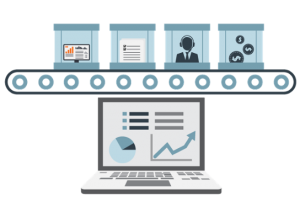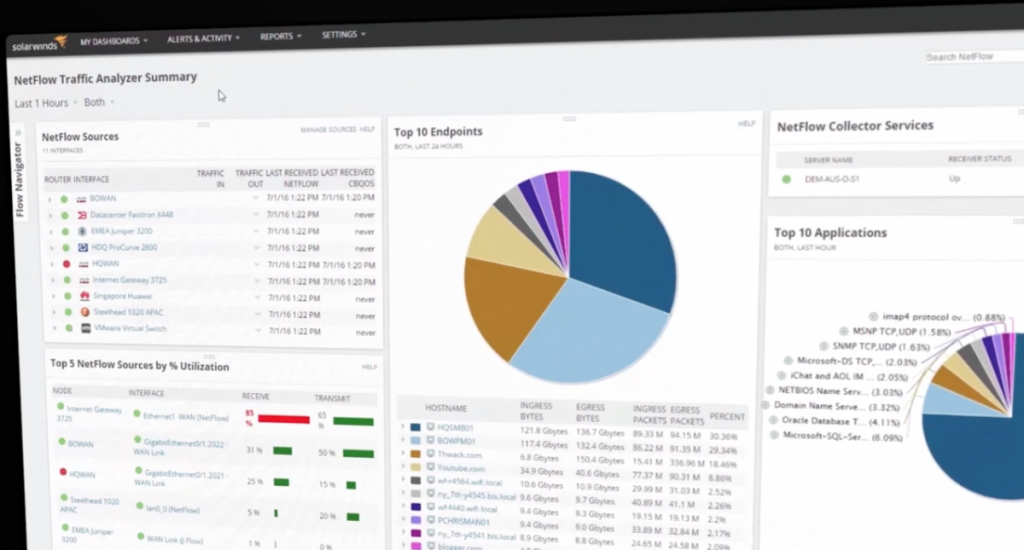
9 ways Remote Management Software can help improve efficiency of your IT team
Ten years ago, plaintive shouts from end-users that “the internet is broken” would result in the arrival on site of a man in a polo shirt to fix the problem, usually by turning things on and off a few times.
In 2017, things are a little different. IT is now seen as a valuable resource that plays a massive share in the strategic vision of organizations, from one man bands to giant, international enterprises.
As Miguel Lopez, General Manager of RMM software suppliers, Kaseya, puts it:
 “IT is now considered strategic in the enterprise. The CIO is now a very important person in a company – they’re up there with the CEO and the CFO.”
“IT is now considered strategic in the enterprise. The CIO is now a very important person in a company – they’re up there with the CEO and the CFO.”
And of course, technology is both evolving and multiplying in its complexity and profusion. The Internet of Things is upon us, and as multiple devices become part of our everyday infrastructures, IT management has become so much more than the remit of that young man in his polo shirt.
SEE ALSO: The Next Generation of IoT
Managed Service Providers (MSPs), employed by many organizations, are using new breeds of Remote Management systems (RMM systems/software) to go above and beyond mere monitoring of existing systems. RMM suppliers (and IT departments employing the same solutions in the enterprise) are now playing important strategic roles in an organization’s growth. That’s no longer remarkable because so much of any business now is dependent on technology, data, networks, and the internet.
So in which ways can RMM solutions change the way an organization pro-actively manages its tech? Here are just a few of the ways:
Alerting
Why wait for end-users to manually create help tickets, which often contain lousy descriptions of the problems suffered? Auto-generation of meaningful tickets means that the correct remediation documentation can automatically be at hand, as well as producing prioritization lists. The CEO unable to access FaceBook through the corporate firewall versus the latest security patch deployment? All decisions can be placed in software.
Network availability monitoring
SNMP monitoring has existed for a while. But often, massive numbers of tickets (and calls) are generated as a result of a single point of failure. This wastes a cumulatively massive amount of time, both for users and IT departments. A single alert for action is more effective, especially when combined with a notification broadcast that the problem is in hand.
Backup monitoring
Checking backup status in-house and to third parties’ infrastructure is dull work. Where there’s boredom, there are errors – why not let the software do the work and flag up inconsistencies?
Additionally, disaster recovery practice is time and resource consuming – software, again, can make the process of recovery testing both more fastidious and less cost-causing.
Reporting
Demonstrating value and efficiency is now mandatory, given IT’s strategic role. Therefore, RMM solutions should be able to provide bespoke reports that can be altered according to purpose: proving ROI, reporting on security efficiency, rates of external social media interaction – all data may be needed at little notice.

Automation and scripting
Large enterprises and MSPs cover multiple sites, so a library of scripts needs to be deployed. But who has the skills, or the in-house expertise to produce these from scratch? Better to use the RMM software’s library, altering where necessary, to provide outcomes such as desktop imaging and standardization, to new server deployments.
Update and patch application
As well as centrally managing patches and updates, good RMM software will now allow updates to be sandboxed and tested before organization-wide rollout, so legacy apps relied upon for business-critical systems don’t suddenly crack under the weight of the security blanket thrown over them!
Endpoint protection
With BYOD now ubiquitous, and an expectation of IT standards being driven upwards by an increasingly IT-literate workforce, the variety of endpoint protection required and management facilities are increasing.
Information and communication
Every IT manager and provider know full well they’ve never received a pat on the back every time things “just work”. Therefore, even when things go right, as well as wrong, clear information should always be available to users and decision makers as to what is scheduled, what’s happening at the moment and what changes have been made.
Cloud management
Every organization’s cloud use is different – public, private, offerings from new startups or ‘long in the tooth’ services from household names. All need effective management, as seamlessly as in-house systems are managed. Good RMM software can cover migration to the cloud, manage data while there and oversee interchange of data to and from different clouds and internal assets.
Here are three suppliers of RMM software we think you should be considering, be that to replace existing provision, or as a first installation:
KASEYA
The company describes its products as able to “empower businesses to command all of IT centrally, manage remote and distributed environments with ease, and automate IT management functions.” While most products tick those boxes, Kaseya’s offering is different in at least a couple of key areas.
Firstly, the company has identified a model of the various stages of maturity that an IT department, or organization that uses an MSP, goes through. These begin at reactive, through efficient and proactive, to aligned and finally, strategic. This insight allows the company to offer parts or all of its portfolio as and when needs arise.
For instance, if an MSP is approached by a company that has an efficient IT approach (that is, “having a systematic approach to […] dealing with daily tasks”), but needs its IT to play a strategic role in determining the whole organization’s future, Kaseya can supply the tools necessary for the MSP to empower its client.
Secondly, by taking annual surveys, and staging conferences and feedback sessions, Kaseya enables ‘trickle-down’ IT expertise. Kaseya stays ahead of the curve by means of its global, disparate client base. This knowledge is passed on to MSPs, who can roll out systems, in turn, to their clients, allowing them to grow and change. Read their full profile…
CONTINUUM
Continuum provides remote monitoring & management, backup & disaster recovery management systems, and mobile device management. Additionally, they have a Network Operations Centre (NOC), which can provide an MSP business with the training and technology it needs, without bearing the costs involved internally.
The company numbers in the millions the number of help tickets its software have helped to close remotely, and so this experience can be brought to bear for its software’s users.

There’s also a range of certifications available in their product rollout and support, ensuring that MSPs’ services are best employed in their clients’ IT provision.
As a paid-for service, Continuum also offers a help desk that replaces in-house provisioning. Their 200+ help desk professionals are available to cover when their clients’ teams are away, not available, on leave, or as failover in the event of local outage rendering them unreachable.
As well as end-user help, there’s also a service on offer that helps second and third level support teams, and systems administrators, in their everyday tasks. Network operations engineers and technicians can perform more than 85 server, desktop and custom projects, including Active Directory deployment, Exchange cross forest migration, VMware setup and similar tasks.
In this way, the combination of a human touch in support of a software offering is presented as an all-in-one solution for MSPs and medium to large enterprises’ IT departments.
SOLARWINDS
SolarWinds’s byline is, “We’re Geekbuilt”, and the company trade heavily on their in-house expertise in the MSP and technical help areas. With their roots in system management and administration very much at the fore, the emphasis is on the depth of technical knowledge at hand, both in human form, but also the driving force behind the software.
There are around 30 paid-for products on offer (too many to list individually here), ranging from network management to systems management (server performance, virtualization services monitoring, web server monitoring etc.), security, database management, helpdesk and cloud management.
Additionally, there is a host of free tools available to download, including a range of empowering software, such as an estimator of costs that helps anyone considering a local to cloud roll out for instance.

Packages are available that are amalgamations of multiple products into discrete collections that cover most eventualities, and all tools can be tried for free before any outlay is required.
Solar Winds are also pretty transparent when it comes to pricing, so MSPs or enterprise IT departments on limited or set budgets can work out how much bang for the buck is available.
There are tools for helping the help desk, such as ticketing systems, remote support, and remote control – everything that an MMS requires. There’s also the amusingly entitled THWACK user forums, and there’s even a range of certification in SolarWinds’s products available.
SolarWinds have offices across the US, Europe, Australasia, and APAC, with Freephone numbers available in many countries.
*Some of the companies featured in this article are commercial partners of Tech Wire Asia
READ MORE
- The criticality of endpoint management in cybersecurity and operations
- Ethical AI: The renewed importance of safeguarding data and customer privacy in Generative AI applications
- How Japan balances AI-driven opportunities with cybersecurity needs
- Deploying SASE: Benchmarking your approach
- Insurance everywhere all at once: the digital transformation of the APAC insurance industry
